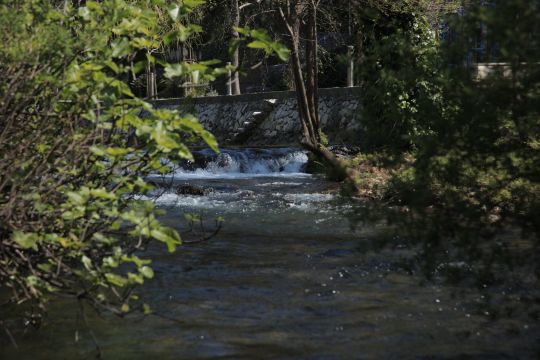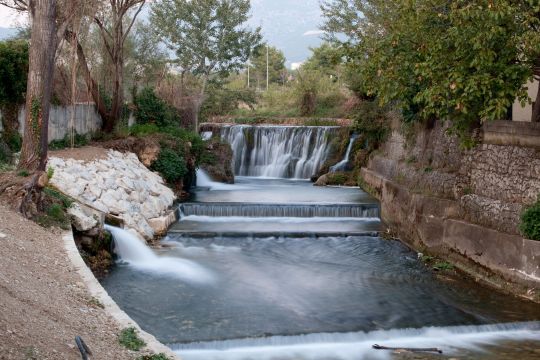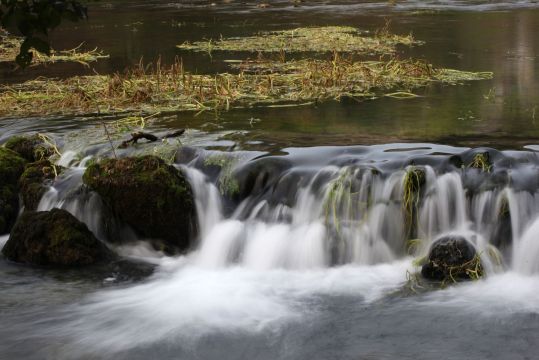The Jadro River springs 35 meters above sea level at the foot of Mosor Mountain, and flows for a distance of 4.5 km before reaching Solin Bay. Despite being so short, it fertilizes and brings life to the area, supplying Solin, Split, Kaštela, Trogir and the surrounding villages with water. The river is called Solinska rika ("the Solin river") in Solin, and due to its importance and historical events from the ancient Croatian past that are associated with it, it is often called "the Croatian Jordan".
The upper reaches of the river have been protected as a special ichthyological reserve since 1984 due to the presence and formation of the endemic trout subspecies called the soft-mouthed trout (Salmothymus obtusirostris salonitana). This nature reserve roughly spans over 78,000 m2, stretching along the flow of the Jadro River from its source to Uvodić Bridge.
People in ancient times were well aware of the significance and value of the Jadro River. The ancient Illyrians built houses by the river and drank its water which is hard to match in terms of quality. It gave them strength before embarking into battle with the Romans, and the Romans built their largest city on this side of the Adriatic Sea precisely here because of its water.
Illyrians drank from it and Diocletian played on its banks as a boy
The Jadro River fed the aqueducts and fountains and also led the great Roman emperor Diocletian to build his palace nearby and drink the river's water. He played on its banks as a boy and returned as an old man to live near the river of his childhood. So much pain and labor was required to build the magnificent aqueduct to Diocletian's Palace, and it was twice as long as the river itself!
Maybe this is where the secret of the greatness and power of the Roman emperors lies. The Barbarians later destroyed the aqueduct and the river was left to flow only through its bed. When the Croats arrived, they used it as a source of spiritual strength. They were baptized in its waters just like in the Biblical Jordan River. This is why the Jadro River has remained a symbol of the acceptance of Christianity to this day.
This is also the location of the grave of Queen Jelena who used to wash her face in the crystal clear waters of the Jadro River. The river inspired her to build churches on the islet formed by its waters where Croatian kings would later be crowned and buried. This is why the small Jadro River is a great symbol of the Croatian people. The Hollow Church still tells the story of the coronation of King Zvonimir that took place here in 1075, even though the nearby Sveti Ilija stream (which flows into Jadro) nearly flooded its remains.
The centre of Solin is the perfect place to take a walk and spend time with people. Ducks and swans swimming in the beautiful Jadro River and the bridges that have been connecting the two banks since the ancient times are now landmarks of Solin. In addition to bridges, there are numerous watermills that have been grinding grain for centuries. Many of the mills are now shut down and preserved as silent witnesses of a bygone era. The only mill that is still operational is Gašpina mlinica. Built in the 18th century, it is opened to visitors and offers demonstrations of the customs of those times.









